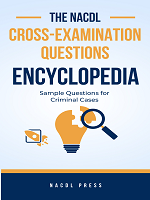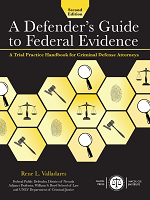Access to The Champion archive is one of many exclusive member benefits. It’s normally restricted to just NACDL members. However, this content, and others like it, is available to everyone in order to educate the public on why criminal justice reform is a necessity.
California
Restitution Centers Benefit Offenders, Victims
Restitution Centers allow offenders to collect income and pay restitution to victims and society while remaining under supervision of the Department of Corrections. Residents leave the centers to work and return upon completion of their jobs. By allowing offenders to enter the workforce, Restitution Centers have contributed to the almost $2 billion in compensation provided to people affected by crime in California since 1965.1 Restitution Centers remove offenders from California’s overcrowded prison system, lowering the financial burden placed on the state by high rates of incarceration. They also benefit both the offender and the general population by mediating the offender’s reintegration into society.
Championed by the California Public Defender’s Association and authored by Assembly Member Felipe Fuentes, California AB 2218 reopens two Restitution Centers in California that closed in 2008. At the time of the closing, the two centers had 36/110 beds empty, which was a large factor in the decision, and budget concerns were driving the governor’s decisions. Under AB 2218, the qualifications for eligibility would be changed from non-violent and non-sexual offenders who owe restitution with a sentence of three years to offenders with a sentence of five years. Also, offenders will be eligible if they owe restitution to the legal system, as opposed to owing only crime victims. These new eligibility standards expand the number of qualified candidates to ensure that the beds are always occupied. However, offenders who owe restitution to victims will have priority over offenders who owe the legal system, making the primary purpose of the centers beneficial to victims.
One key argument in support of the Restitution Centers is the reduction in recidivism. Compared to California’s nation-high recidivism rate of 70 percent, the Restitution Centers have a recidivism rate of just 20 percent. Kimberly Wong, a member of the legislative committee of the California Public Defender’s Association, helped draft the legislation. She explained the difference between these programs and prison: “A great benefit is that it allows for families to visit. Having that support network around the participant is good. Children could come and see their parents, you could actually give your child a hug, and they don’t have to wait in line and drive four hours to see you. That is what motivates a person to do well, take responsibility, and reintegrate into the family and society.”
The bill gained unexpected support from a variety of groups such as Crime Victims United. California applies one-third of the inmate’s salary to victim restitution, thus keeping the priority on the victim. Additionally, part of the inmate’s salary offsets the costs of the centers, which saves the taxpayers even more money. With another portion of the inmate’s salary going to a trust fund available to the inmate after release, it becomes a building block for the future. Not only does it provide funds for them to use, but many former prisoners continue to work for the same employer after they are released. The opportunity the centers provide for them expands from being a temporary way to pay restitution into being the foundation of their future careers. Reopening the Restitution Centers is a win-win scenario because it saves the state money, ameliorates the extreme overpopulation of prisons, helps victims receive restitution, decreases recidivism, and provides an invaluable first step to reintegrate offenders into society.
Alaska
DNA Bill Preserves Evidence
There have been over 270 post-conviction DNA exonerations in the United States since 1989. The average length of time served by exonerees is 13 years, and 17 of the exonerees were serving time on death row before their release.2 Despite the profound implications of DNA testing in proving innocence, some states lag behind others in their commitment to evidence preservation and post-conviction DNA testing.
Amongst advocates, there was a sense of inevitability about Alaska’s DNA evidence bill. “Once the administration realized there was going to be a DNA testing and evidence preservation bill, the issue was what form it would take,” said Bill Oberly, the executive director of the Alaska Innocence Project (AIP). Oberly and the AIP helped craft the legislation and gain support from other legislators, but point to Sen. Hollis French as the driving force behind the matter. “Sen. French did a great job of bringing all the sides together. It helps when you have somebody who has both the skill and position in the legislature to do it.” Alaska was one of just a handful of states that did not have DNA testing and evidence preservation.
This reform legislation has several key highlights, with the ultimate goal of preserving evidence for decades after a crime and allowing DNA testing in order to prevent an innocent person from going to jail. “The cause is just; it’s something that needs to be done everywhere. If you keep chipping away at it, it’s going to happen,” Oberly said with a sense of optimism for the remaining states that lack DNA legislation. People pay lip service to the phrase “innocent until proven guilty,” but if a defendant is not allowed to use modern technology and all avenues necessary to prove his innocence, the phrase loses its meaning. In an era when the shortcomings of witness identification are becoming increasingly apparent, the use of DNA evidence can help shed light on the most important issue in any criminal trial — the identity of the offender.
Ohio
Legislation Encourages Recorded Interrogations
During both interrogations and police lineups, law enforcement officers can inadvertently influence the decision-making ability of the eyewitness or alleged offender. A police officer who knows the identity of the suspect in a lineup may unintentionally communicate that information to a witness, impairing the ability of the witness to accurately identify the suspect. Additionally, officers may mislead or intimidate witnesses and suspects during interrogations, all of which is undocumented in court when the interrogations are not recorded. Ohio’s bipartisan bill attempts to ameliorate some of these pitfalls.
In an attempt to become a national role model for innocence reform, Ohio passed a bipartisan bill with wide support that focuses on (1) preserving DNA evidence in serious crimes, (2) providing police incentives to record all interrogations, (3) requiring double-blind police lineups so that an overseeing officer does not know who in the sample pool is the suspect, and (4) expanding post-conviction DNA testing to include parole.
The passage of SB 77 was unique. Instead of proposing the bill and then undertaking the tiring process of gaining support, interested parties gathered support before proposing the bill. By educating people about the value of the reforms, various interested sides were able to come to the table to discuss the issues and find a solution. Rebecca Brown, a policy advocate at the Innocence Project, helped garner support at hearings and legislative meetings. Sen. David Goodman sponsored the bill, and he had crucial allies in Senate Judiciary Chair Seitz, House Criminal Justice Committee Chair Tyrone Yates, the Ohio Innocence Project (considered a driving force by Brown), the Ohio Prosecuting Office, and a host of other allies.
This low-cost bill requires a new model for already existing training of police officers. It does not require recorded interrogations, but strongly encourages it. “When you have an issue that is being met with resistance,” Brown explained, “bringing people to the table as early to the process as possible is always helpful. … Listen to concerns of those opposing the legislation and address the concerns early in the game.” Brown specifically gave credit to Ohio’s Exonerated Themselves, a group of individuals who have been exonerated after being wrongfully arrested due to errors these reforms aim to correct. These individuals went door-to-door and garnered support for the bill. “It really put a face on wrongful conviction,” Brown said.
Notes
- http://www.pe.com/localnews/politics/stories/PE_News_Local_D_victims16.230717e.html.
- http://www.innocenceproject.org/Content/Facts_on_PostConviction_DNA_Exonerations.php.






